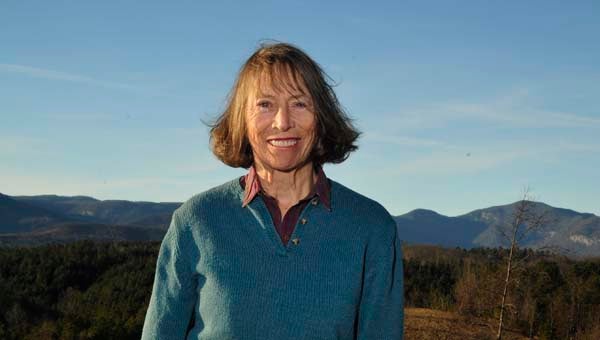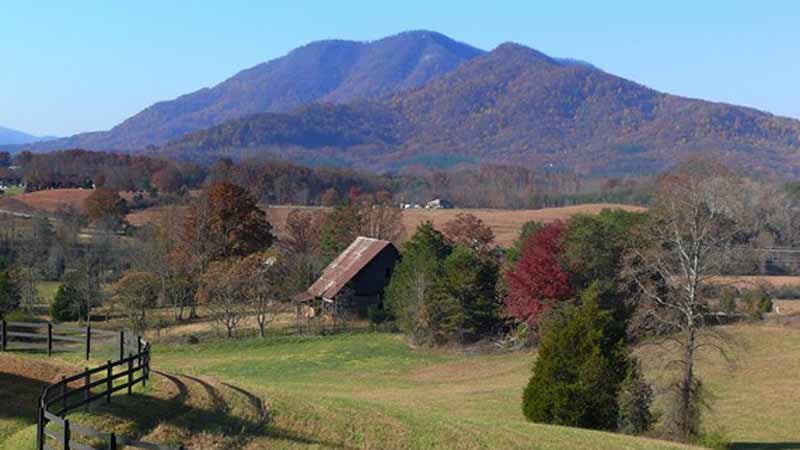Preserving, protecting our natural legacy for future generations
Published 10:00 pm Friday, January 30, 2015
By Mark Schmerling
Protecting the natural legacy of western North Carolina takes vision, and a willingness to do what is right for the community in the long run.
That’s how Pacolet Area Conservancy (PAC) has obtained protection for over 8,600 acres (and increasing) of privately donated farm and forestland that will be kept in its natural state forever.
That’s also how PAC acquired conservation easements on some 1,500 acres of fields, inspiring views, and forested creek valleys in one location—in what is now Walnut Creek Preserve, surrounding the Anne Elizabeth Suratt Nature Center.
As with many such acquisitions, this one began with two individuals who saw the potential of preserving the land, and the harmful consequences of not doing so.
They are Barbara (“Babs”) and Bob Strickland. Babs was recently named president of PAC’s board of directors. Bob and Babs have been together for 30 years.
“How did I get here?” Babs asked rhetorically. Her journey emphasizes that things that one does in one stage of life are often building blocks for later accomplishments.
Babs, who grew up in Jacksonville, Fla., attended Brevard College, Columbia University, and taught French literature in graduate school at the University of Virginia.
“That got me into law school,” she recalled. At the time, Babs was involved with the family business Suddath Companies, which began as a moving and storage concern, and which is now a worldwide provider of storage and moving logistics.
She became one of the few women to go right from an undergraduate degree to law school. She attended law school at the University of Virginia, graduating at age 38, with an eight-year-old child.
That led to a long stint practicing law in a corporate law firm. In 1998, she left the firm to work for Suddath, eventually becoming secretary of its board. In Jacksonville, Strickland became a volunteer board member of that city’s International Chamber of Commerce. Jacksonville’s mayor named her as head of the chamber’s International Development Commission. Not long after, Florida’s governor named Babs as the first woman to serve on the board of the Jacksonville Port Authority.
The Port Authority operated three seaports and three airports. Babs, with roots in a family business involved in transportation, eventually was named as chair of the board.
“It was a wonderful, wonderful experience,” Babs recalled.
Other things were happening during that time. In 1992, she and Bob purchased a 95-acre farm in Polk County, adjacent to what was then 2,000 acres of Champion Paper Company land.
Babs’s daughter, Anne, had attended the University of Illinois, and had hoped to be an astronaut. Tragically, she was killed in the crash of a small plane she was flying.
“We were devastated,” Babs said. “We wanted to make a memorial to her.” They wished to purchase a small property as a memorial.
Meanwhile, International Paper, which had purchased Champion in the late 1990s, wished to sell its 2,000-acres, but would not consider selling off small parcels.
While Babs and Bob did not have the means to purchase the 2,000 acres, Babs’s brother, Steven Suddath, helped them obtain a loan.
“A lot of other people helped make it work,” Babs said.
They realized that they could make the arrangement work financially by creating an equestrian community with limited home sites, leaving most of the land in as natural a state as possible. Much of what is now open fields had to be cleared. When Champion owned the land, individuals were permitted to ride horses, and also hunt there.
Babs noted that before they purchased the tract, they were concerned what could happen if a developer purchased it, and changed the character of the land.
International Paper’s Michael Mann, said Babs, “was so good to us. He trusted that we would do what we said we were going to do.”
Both Bob and Babs worked with PAC from the beginning, she noted. The tract contains parts of 25 creeks, including two miles of Walnut Creek, a tributary of the Green River. Hunting permission is limited to residents of the preserve.
Three easements with PAC total at least 1,500 acres, said Babs, noting that she and Bob wished to protect as much land as possible. It helps greatly, she noted, that current owners within the preserve care about the land and help protect it.
PAC’s first easement, for some 900 acres, occurred in 2005, with subsequent easements of 490 acres and the remainder of the 1,500-plus acres, in 2007 and 2013, respectively.
During that process, Babs and Bob met Pam Torlina, PAC’s director of stewardship and land acquisition. Torlina has served in that capacity for some eight years.
After meeting Torlina, the dream of creating a memorial to Anne took shape, in the form of the nature center within the preserve.
Babs said that they had wanted to work with PAC on all aspects of nature education.
“I’m so pleased,” Babs continued, “how this dream has evolved into a reality of people coming together to learn about nature, honoring Anne’s memory in that way.” Thus was born the Anne Elizabeth Suratt Nature Center at Walnut Creek Preserve.
This endeavor was a perfect fit. Until that time, PAC had no nature center of its own. The center’s location, at the northern end of the preserve, helps those residents near the southern end realize this beauty. “It’s great to expose people to that,” Babs pointed out.
“Most people want to be able to contribute to their community in ways that are best for them,” Babs continued. “This organization (PAC) is my focus for the community. Pam (Torlina) has done a wonderful job of creating an awareness of PAC. We need to increase awareness of PAC as an organization that deserves the financial support of the community.”
Only through organizations like PAC, Strickland said, can important qualities, including open space, be preserved.
Her goal is to increase the awareness of PAC’s role in this community, and increasing financial support in the community for PAC.
A second goal, Strickland noted, is to help community members understand that PAC covers all of Polk County, not simply the Pacolet River Watershed.
Walnut Creek Preserve is a case in point, being in the Green River Watershed, over 70 percent of which lies within Polk County.
Strickland wants to “help people realize that this is the time to protect their land.” She wants to encourage landowners to obtain conservation easements, especially along riparian (streamside) areas.
PAC works and partners with the Conservation Trust of North Carolina and Blue Ridge Forever.
Babs summed up her and her husband’s partnership, within a community partnership, by saying, “I can’t articulate how joyful I feel to have done this with my husband in my daughter’s memory.”



